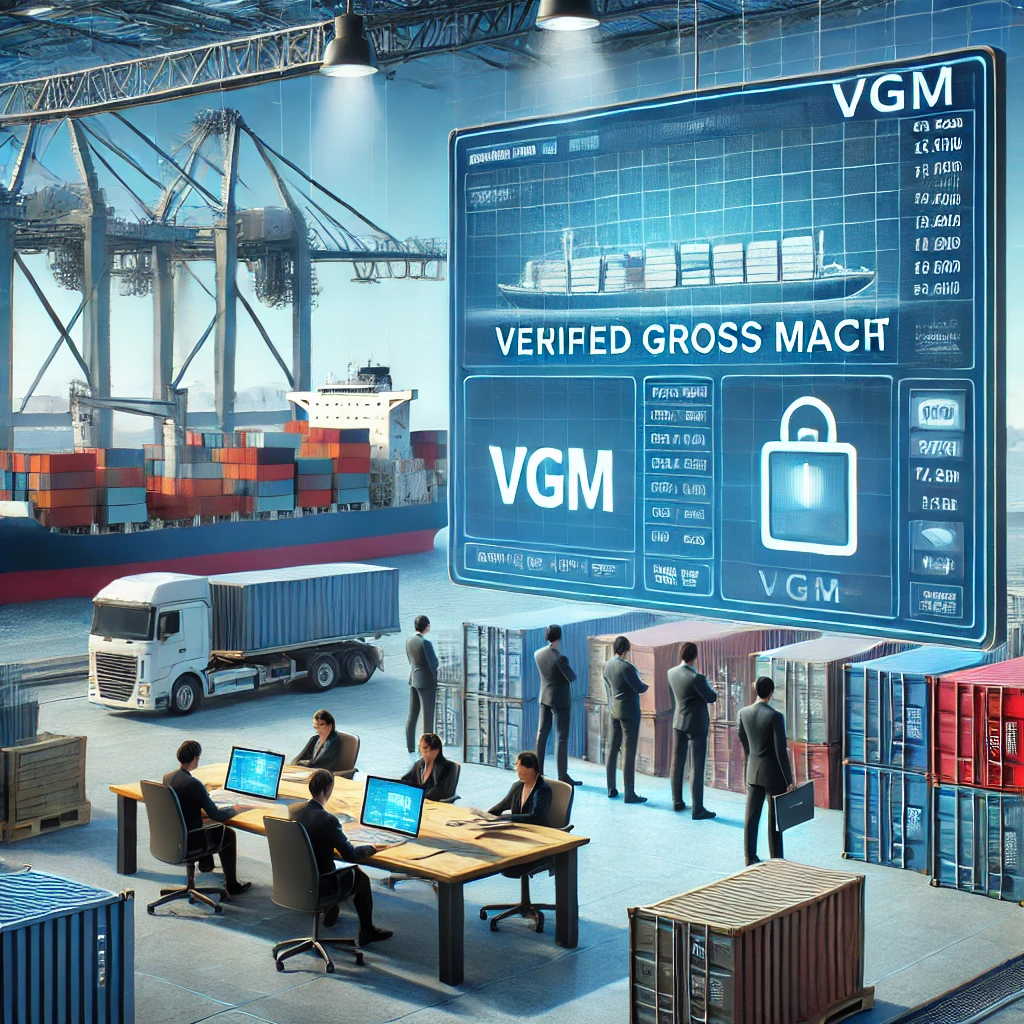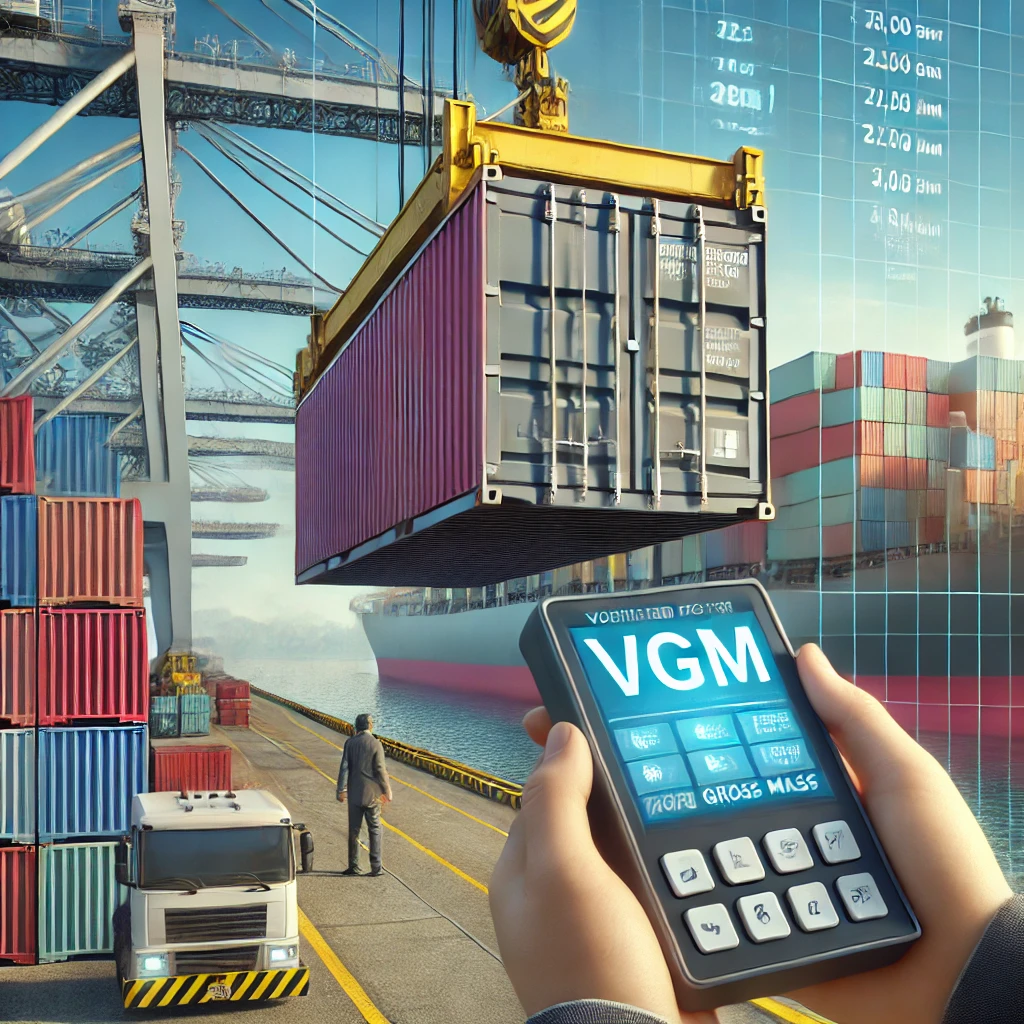Everything You Need to Know About Verified Gross Mass (VGM)
This article provides an in-depth look at VGM, its importance, key regulations, methods of calculation, and how businesses can ensure compliance.

What is Verified Gross Mass (VGM)?
Verified Gross Mass (VGM) refers to the total weight of a packed shipping container, including:
- Cargo weight (the goods inside the container)
- Container tare weight (the empty container’s weight)
- Additional materials (packaging, pallets, securing tools, etc.)
Shippers are responsible for providing an accurate VGM to prevent vessel overloads, imbalances, and safety risks at sea and on land.
Why is verified gross mass VGM Important?
1. Ensuring Safety at Sea 🚢
Incorrect weight declarations can cause container stack collapses, vessel instability, and accidents, putting crew, cargo, and ships at risk.
2. Compliance with SOLAS Regulations 📜
Since July 1, 2016, SOLAS has made VGM reporting mandatory to prevent misdeclaration and ensure accurate ship stowage planning.
3. Preventing Supply Chain Disruptions 🚛
Ports and terminals will reject containers without a valid VGM, causing shipment delays, penalties, and additional handling costs.
4. Liability and Legal Compliance ⚖️
Falsified or inaccurate weight declarations may result in fines, cargo rejections, and legal liabilities for shippers.

How to Calculate Verified Gross Mass (VGM)?
Shippers can determine VGM using two approved methods:
Method 1: Weighing the Packed Container ⚖️
The entire packed container is weighed using a calibrated weighbridge or certified scales. This is the most accurate and direct method.
Method 2: Calculating Cargo + Container Weight 📊
The total weight is determined by adding the weight of the cargo (including packaging, pallets, securing tools) to the tare weight of the empty container (as stated on the container door).
Formula:
VGM = Cargo Weight + Packing Materials + Container Tare Weight
This method requires accurate weight declarations from suppliers, and errors can lead to compliance issues.
Steps to Submit verified gross mass (VGM) to Carriers
- Weigh the Container – Use Method 1 or Method 2 to calculate VGM.
- Complete VGM Documentation – The shipper submits the VGM declaration (digital or physical) before the carrier’s deadline.
- Transmit VGM to Shipping Line & Terminal – Use Electronic Data Interchange (EDI) or carrier platforms for submission.
- Confirmation & Stowage Planning – Carriers verify the VGM before loading containers onto vessels.
Key Information Required in a VGM Declaration:
✅ Shipper’s name & contact details
✅ Booking number & container number
✅ Verified weight (VGM)
✅ Weight verification method used
✅ Signature of authorized personnel

Who is Responsible for verified gross mass (VGM) Compliance?
1. Shippers (Primary Responsibility) 📦
The shipper listed on the bill of lading must provide an accurate VGM declaration to the carrier before the vessel’s cut-off time.
2. Freight Forwarders & Logistics Providers 🚛
They may assist in VGM submission, but the shipper remains legally responsible.
3. Carriers & Shipping Lines 🚢
Shipping lines must verify VGM before stowing containers and ensure compliance with SOLAS regulations.
4. Port Terminals & Authorities ⚓
Ports may refuse loading for non-compliant containers and conduct random weight checks.

Penalties for Non-Compliance with verified gross mass (VGM)
❌ Container Rejection: Ports will not load containers without a valid VGM.
❌ Fines & Legal Action: Violations result in fines, supply chain disruptions, and increased liability for shippers.
❌ Delays & Extra Handling Costs: Inaccurate weight declarations require re-weighing and adjustments, leading to delays and penalties.
Best Practices for verified gross mass (VGM) Compliance
✅ Use Certified Weighing Equipment – Ensure compliance with national weight regulations.
✅ Train Staff on VGM Requirements – Educate logistics teams on SOLAS weight regulations.
✅ Automate VGM Submission – Use EDI systems for efficient digital reporting.
✅ Verify Supplier Weight Data – Prevent errors by cross-checking cargo weight declarations.
✅ Plan for Submission Deadlines – Avoid last-minute errors and port rejections.
Frequently Asked Questions (FAQs)
Q1: Is VGM required for all shipments?
📌 Yes, VGM is mandatory for all containerized cargo under SOLAS regulations.
Q2: What happens if I fail to submit VGM?
📌 The container will not be loaded onto the ship, and delays or fines may apply.
Q3: Who can submit the VGM declaration?
📌 The shipper, freight forwarder, or logistics provider can submit the VGM, but the shipper remains legally responsible.
Q4: Can I estimate the weight of my cargo for VGM?
📌 No, the weight must be accurately verified using Method 1 or Method 2.
Q5: How do I find the tare weight of my container?
📌 The container tare weight is listed on the container door or provided by the shipping line.
Conclusion
The Verified Gross Mass (VGM) requirement is a critical aspect of global shipping, ensuring safety, compliance, and efficiency in cargo transport.
By accurately calculating and submitting VGM, shippers can avoid delays, penalties, and supply chain disruptions. Whether using weighing scales or calculating cargo weight, following best practices ensures smooth operations and compliance with international shipping regulations.
